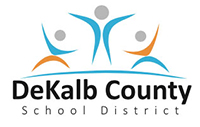School incorporates arts education in STEM lessons

At Marbut Elementary Traditional Theme School, the answer to those questions involves a single acronym: STEAM, or science, technology, engineering, art, and mathematics.
Marbut is one of many DeKalb County School District (DCSD) schools to pursue STEAM certification, which formally recognizes schools that have incorporated all five subject areas into every lesson plan, resulting in an entirely new school culture. The school has been invited to present on its journey toward STEAM certification at the 2018 Georgia STEM/STEAM Forum in October.
Though the Lithonia school is at the beginning stages of its journey, staff are already noticing a difference in students, teachers, and the building as a whole.
“I’ve noticed students are more excited coming into art and science. They’re going into both classrooms and making connections,” said Andre Mountain, principal at Marbut. “They’re connecting everything they’re learning and reading. Kids are creating artifacts for the building, things they’ve made. It feels like their school.”
Students at a STEAM-certified school utilize a cross-curricular, critical thinking approach to education through project-based, real-world learning that typically involves a social action component. Official certification in STEAM creates opportunities related to grants, corporate partnerships, and exclusive learning materials.
Currently, the only STEAM-certified school in DCSD is Henderson Mill Elementary. Marbut hopes to change that fact within the next few years.

Chester-Benton collaborates with teachers throughout the school to create art projects based on curriculum. For example, when Marbut students learn about the five senses—touch, sight, smell, taste, and sound—students are taught how to represent each through art, allowing more self-expression about subject matter. She said enjoys teaching students how each subject can apply to the arts.
“Whatever teachers are doing, we’re rolling out in art classrooms,” said Chester-Benton. “Right now, we’re doing strictly science, but we’ll soon be focusing on technology. It has been fun!”
Fellow teachers at Marbut encourage students to look at each assignment and identify the STEAM components within. For example, when studying the butterfly lifecycle, students use new technology to examine and watch videos about the insect before participating in interactive activities, going outside to gather materials, building models based on what they learn, and creating art projects.
Lindsey loves allowing students to incorporate the arts—be it music, movement, drawing, or sculpture—to her everyday lessons. Marbut has implemented three separate tracks for music as part of this push, including chorus, band and string orchestra.
“It’s really hands-on,” said Ebony Lindsey, STEAM Lab teacher at Marbut. “We make sure STEAM is incorporated into every lesson. They take the science, technology, engineering, art and math and build things based on all of it. It’s very infectious—parents have told me about things students have made. The learning itself is infectious: students are taking it beyond the class.”
Lindsey appreciates how STEAM incorporates all learning styles into its model. While certain students may absorb information through hearing, others retain knowledge through visuals, hands-on activities, and creativity. Under STEAM, all are treated equally.
“Students are learning that everyone is successful at something,” Lindsey said.
In the same way, Chester-Benton has identified ways that STEAM promotes other ways of teaching and learning.
“Students who may not ‘get it’ any other way can now ‘get it’ visually,” Chester-Benton said. “You can tell by what teachers say to me. They’ll come to me and say, ‘Oh, you did this in here.’ We’re now talking to our music teacher [Lillian Owens] because we want to include all the arts—and eventually include physical education.”
Both teachers say STEAM is important to creating real-world connections to lessons in school. Students are learning they can take the knowledge gained in class to middle and high school, as well as a career beyond DCSD. In the same way, they’re finding new ways to apply art and expression to non-art subject arenas.
“You wouldn’t have a pencil or a shoe without STEAM,” Lindsey said. “These aren’t just things you take a test with. Someone made them and made a career out of them.”

Principal Mountain stresses that STEAM certification cannot be obtained by a school acting alone, stating it requires partnerships with local STEAM-oriented businesses, parent-teacher organizations, and more.
“There are lots of entities who are helping us move along this road,” Mountain said. “You need the backing of the community, parents, and corporate sponsors to be successful. Everyone has been very supportive.”
Marbut is currently in talks with Delta Airlines as a corporate sponsor, who can offer funds for technology, furniture, industry expert-led lesson plans, STEAM-based school events, and more. The PTA has already donated robots and hosted STEAM-related functions at nearby businesses.
DCSD considers STEM—the precursor to STEAM—a top priority and a major component in creating future-minded, career- and college-ready students. In May 2018, AdvancED—an international authority on education accreditation—certified McNair Middle as well as Oak Grove Elementary and Henderson Middle as STEM schools, increasing the district’s total to 26.


